geology
Latest
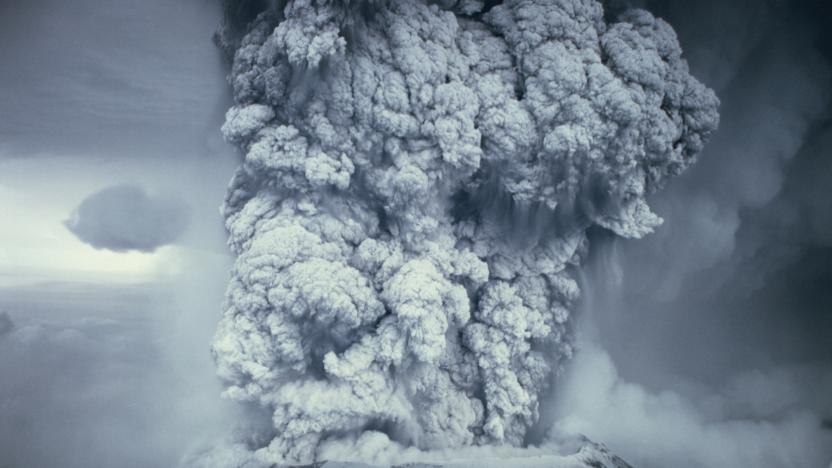
The USGS warning system that knows when rumbling volcanoes will blow their mountain tops
The National Volcano Early Warning and Monitoring System is standardizing and modernizing the nation's hodgepodge of USGS and academic volcano monitoring stations.
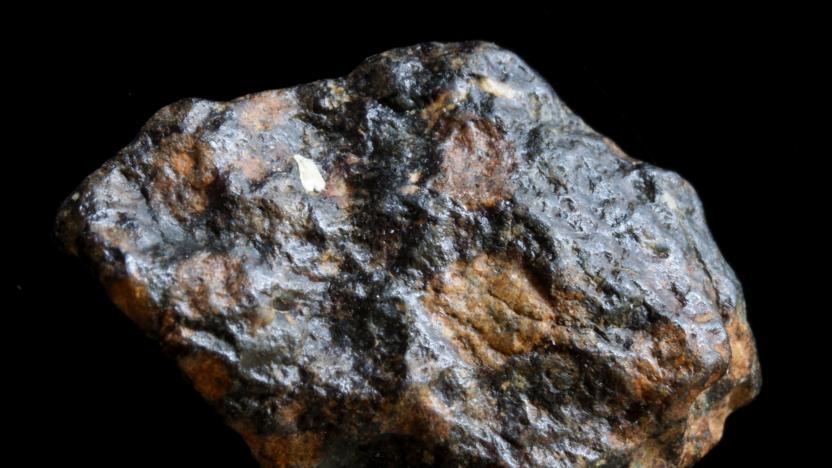
Early Solar System meteorites might explain how Earth got water
Scientists have discovered that meteorites from the early Solar System held water until relatively recently, possibly contributing to life on Earth.

USGS releases first complete geologic map of the Moon
The USGS has made it easy to study the Moon's surface by releasing the first comprehensive geologic map of the lunar landscape.
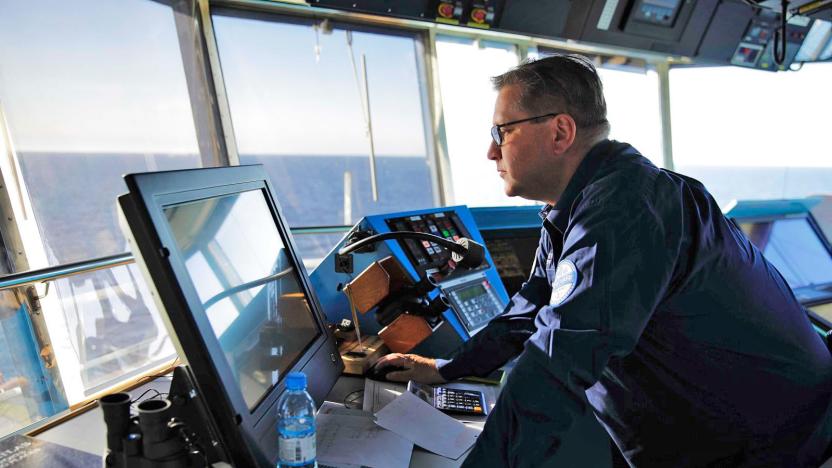
Earth's fast-moving magnetic north pole is messing with navigation
The Earth's magnetic north pole is constantly on the move, but it's now enough of a problem that it's having a significant effect on navigation technology. Scientists at the National Centers for Environmental Information have delivered an update to the World Magnetic Model a year early after "unplanned variations in the Arctic region" (read: quick movements) made the existing magnetic north inaccurate. That's a problem for virtually every device with a magnetic compass, including smartphones, military vehicles and airliners.
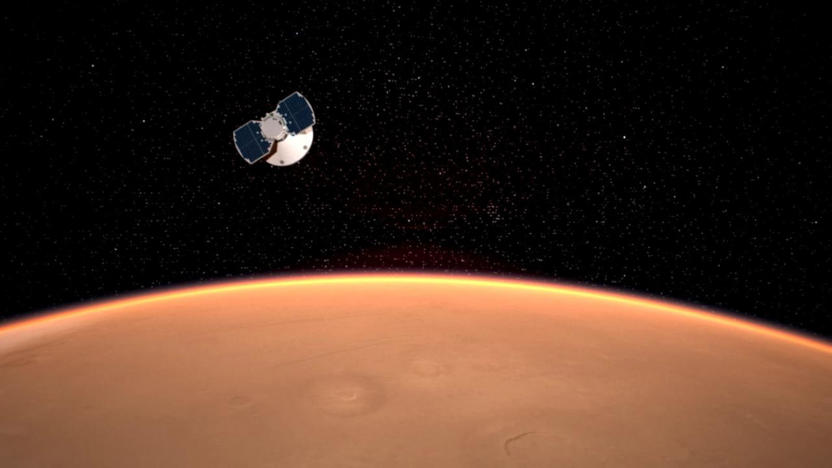
Watch NASA's InSight land on Mars tomorrow starting at 2PM ET
After a months-long journey, NASA's InSight lander is poised to touch down on Mars -- and you'd better believe NASA is offering plenty of ways to tune in. It's delivering live coverage of the landing on November 26th starting at 2PM Eastern (the actual landing starts at roughly 2:40PM) across virtually all its video channels. Suffice it to say you have many more options than when Curiosity reached Martian soil in 2012. In addition to the standard avenues, you can watch a commentary-free JPL feed, a Twitch stream and even 360-degree video on avenues like YouTube (same link as the JPL feed) and Facebook.
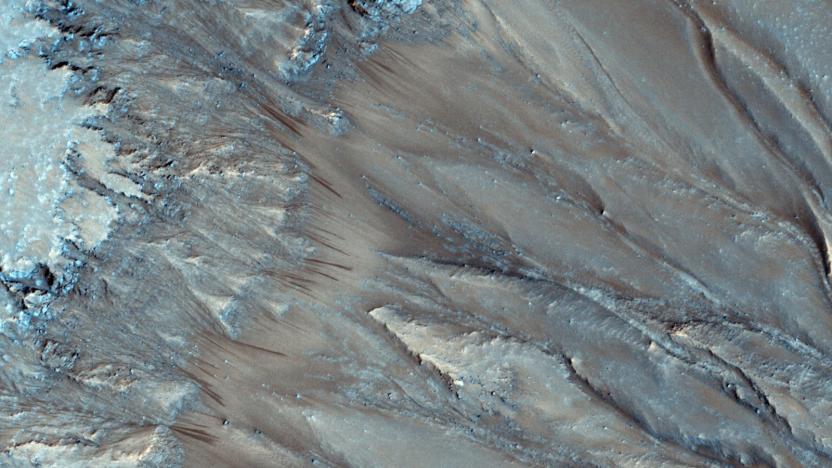
Orbiter flaw may have ruled out some signs of water on Mars
You might not want to get too excited about the prospects of finding water on Mars. A recently published study has determined that the Mars Reconnaissance Orbiter's approach to handling water data is flawed, potentially invalidating some earlier discoveries of salty water flows. The machine's Compact Reconnaissance Imaging Spectrometer for Mars (CRISM) can be confused by some high-contrast areas, and the software used to correct that data can inadvertently produce false signs of perchlorates that hint at salt water flows. There appeared to be an abundance of perchlorates in the corrected results, but there doesn't appear to have been any in the raw data.

LiDAR strips landscapes down to their bare glory
LiDAR is having a moment right now helping self-driving cars and robots not hit things, but don't forget about what else it can do. In a study called The Bare Earth, scientists from the Washington Geological Survey used it to image the ground right down to dirt and rocks. Stripped of trees and other distractions, the images provide not only valuable geological survey data, but stunning, otherworldly views of our planet.

The Mars InSight lander is on track to launch in May
The InSight (Interior Exploration using Seismic Investigations, Geodesy and Heat Transport) lander has passed its last major environmental test ahead of a planned May 2018 launch to Mars. The thermal vacuum testing, or TVAC, lasted two weeks and simulates the harsh, stressful environment of space. "With InSight coming out of TVAC, the team has successfully completed the environmental testing phase and will now be finalizing launch preparations over the coming months," Scott Daniels, the InSight assembly, test and launch operations manager, told Space.com, which reported the news.

Dark streaks on Mars may not be caused by flowing water
In 2015, scientists analyzing mysterious dark streaks on the surface of Mars found evidence that they were formed by liquid water -- an exciting discovery that meant microbial life might be supported on the planet. But new findings published this week in Nature Geoscience suggest it might not be liquid water after all.
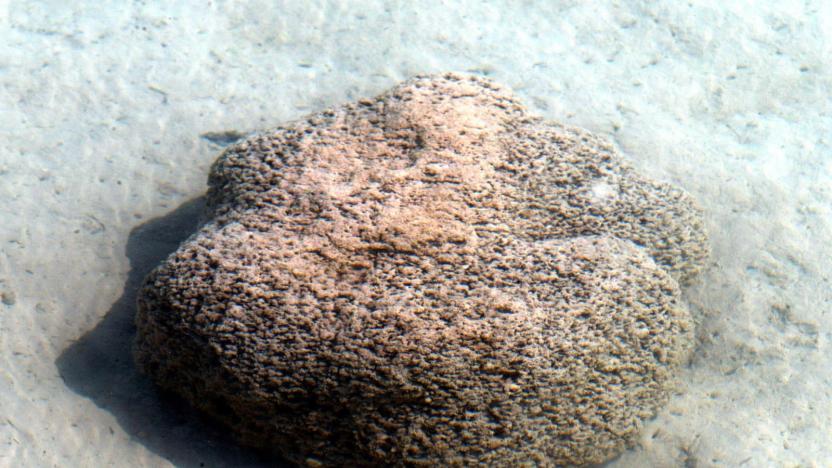
Scientists search 3 million publications to unlock sea change secret
Sometimes facts from the ancient world aren't hidden in fossils or subterranean rock -- they're found across a massive range of ordinary data. Scientists started a project to discover when a unique type of rock formation, stromatolites, stopped forming in the ancient world. But to finish, they developed tools that let them parse through three million scientific publications, lowering the bar for research projects in the future.
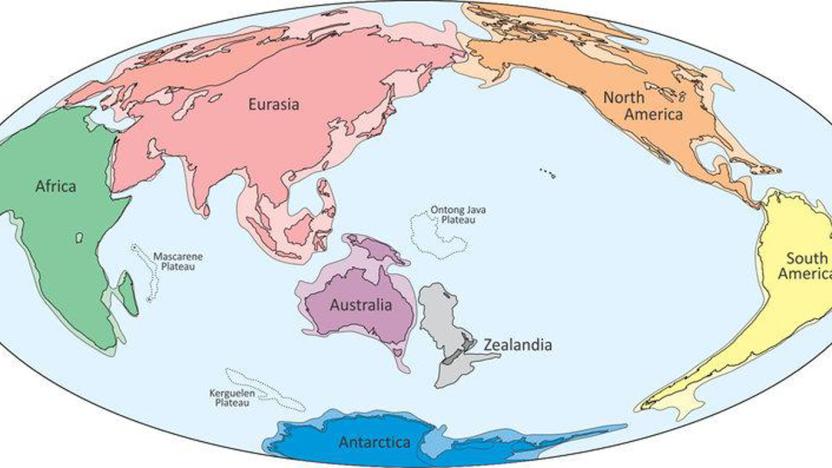
The Pacific Ocean is hiding a whole continent
Who knew that finding hidden continents was a trend? Researchers now say they've confirmed the existence of Zealandia, a giant land mass (roughly two thirds the size of Australia) hiding in the Pacific Ocean -- as you might guess, New Zealand is its peak. Academics have long suspected that the mass was a continent, but they only recently gathered enough information to make a convincing case.
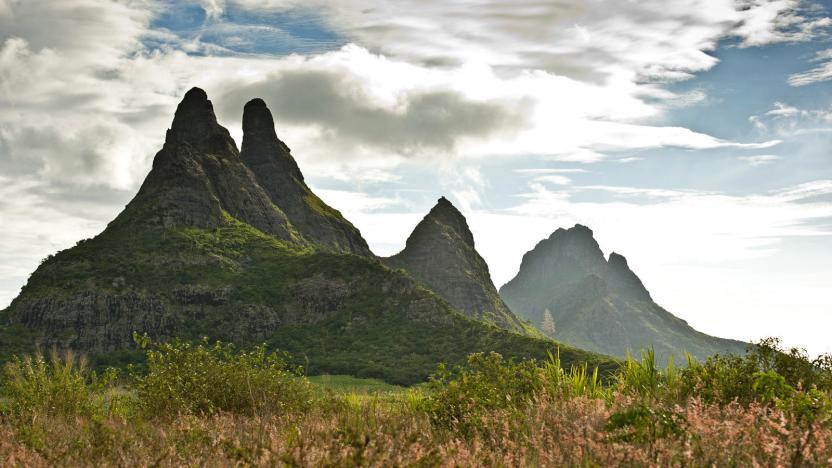
Scientists may have discovered a lost continent
As much as we humans think we know about Earth's ancient composition, it's clear we have a lot to learn. Researchers now say they have evidence of a lost continent, Mauritia. The team found rocks on Mauritius with embedded zircon crystals that were almost 2 billion years old, or far older than the island itself ("just" 9 million years old) -- a hint that there's a continental crust lurking miles underneath. Most likely, the crystals were carried up to the surface by volcanic magma.
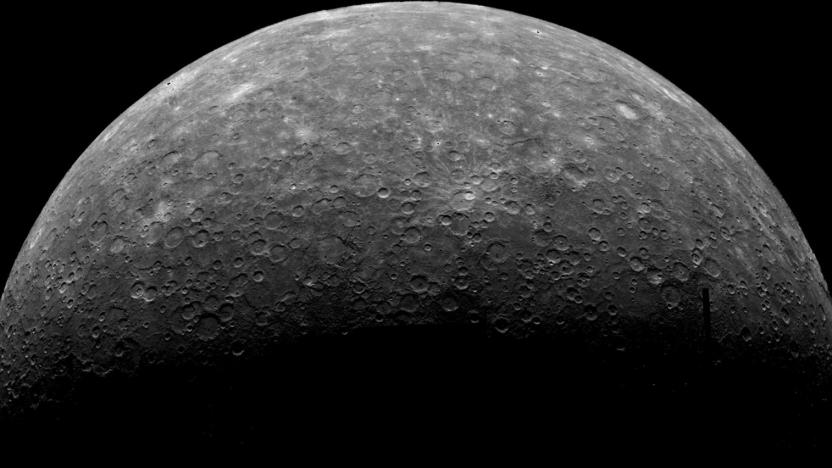
Mercury is the first planet after Earth with tectonic activity
To date, Earth has been the only planet in the Solar System known to demonstrate tectonic activity. Other planets are geologically active, but not much more than that. However, it now looks like our homeworld isn't alone. Smithsonian researchers combing through high-resolution images from NASA's Messenger spacecraft have determined that Mercury is still tectonically active. The team spotted many relatively young fault scarps (surface offsets), which are strong indicators that the minuscule planet's crust is still shrinking as the core cools down. As Gizmodo notes, common wisdom previously dictated that Mercury's interior would have settled down billions of years ago.
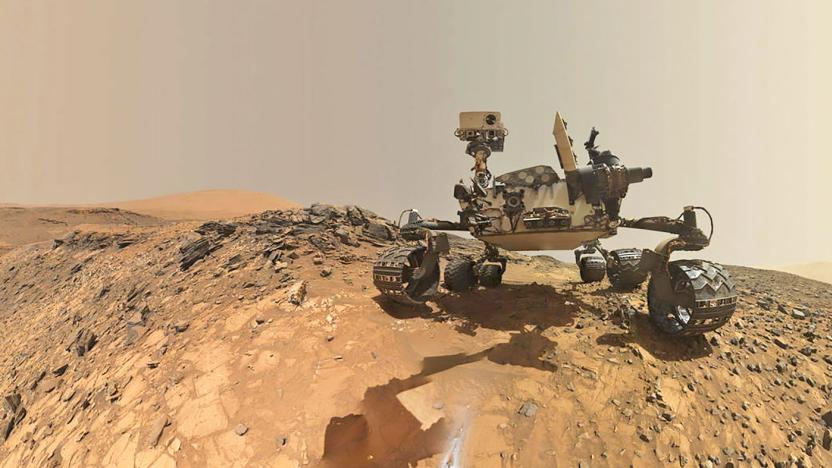
Mars may have had explosive volcanoes
The prevailing wisdom is that Mars has long been a stable planet. Without tectonic plates, it didn't have the violent upheavals that lead to earthquakes and explosive volcanoes here on Earth... did it? Not so fast. Scientists combing over data from NASA's Curiosity rover have found evidence suggesting that explosive volcanoes were a reality in the past. Samples from the planet's Gale crater include high concentrations of the mineral tridymite, which you tend to see around explosive volcanoes here on Earth. If so, the material was most likely carried from volcanoes to the crater by ancient water streams.

Stanford looks to the skies to calculate underground water
A team at Stanford has pioneered a new use of satellite imagery that could help its home state avoid future water supply issues. Previous Stanford research had already proved satellite images (specifically Interferometric Synthetic Aperture Radar) of minute changes in ground elevation could provide reliable clues to underground water flow. The problem was, only tiny sections of the images provide useful data, and analyzing them is a laborious, manual process. Hopefully not for long.
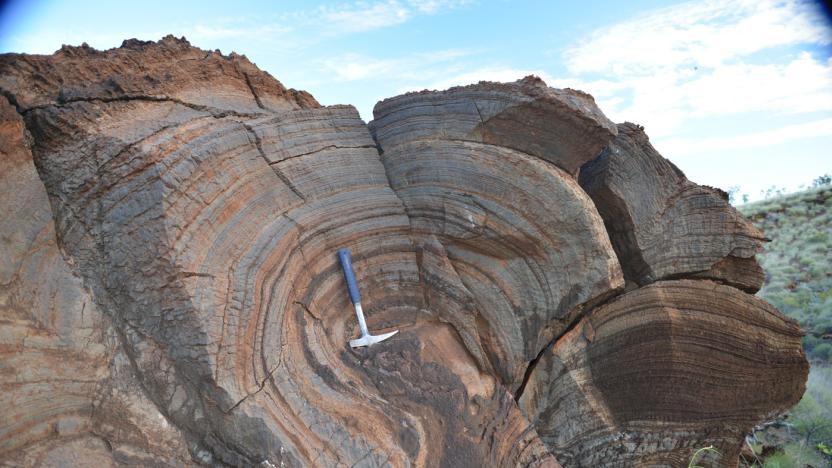
Earth's early air weighed half as much as it does today
Scientists have long postulated that the early Earth's atmosphere must have had considerably higher pressure than it does today, since the sunlight was fainter. However, researchers have made a discovery which suggests that this theory is way off the mark. By studying the size of bubbles in 2.7 billion-year-old lava flows, they've found that the air pressure was less than half what it is now -- in other words, the atmosphere was much lighter back then. As there's evidence of liquid water at that time, the Earth must have had less nitrogen and more greenhouse gases (such as carbon dioxide and methane) preventing heat from escaping into space.
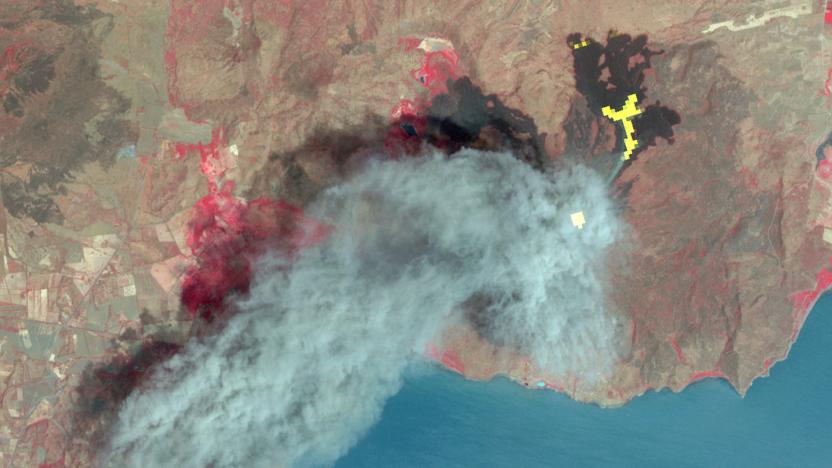
NASA gives away the data from an Earth-mapping spacecraft
Want to know a whole lot about the Earth's surface? NASA and the Japanese government are now giving away all the data from the ASTER (Advanced Spaceborne Thermal Emission and Reflection Radiometer) instrument... for free. Previously, you had to pay if you wanted anything more than basic topographical maps; now, you get over 16 years' worth of near-infrared elevation and thermal data. This is mostly helpful if you're a student or a scientist, but it could be worth a peek if you've wanted to see how everything from farms to volcanoes can affect the planet's surface heat.

Scientists to drill into asteroid impact that wiped out dinosaurs
There's plenty of evidence to indicate that a gigantic asteroid likely wiped out the dinosaurs (and many other forms of life) when it smacked into what's now the Gulf of Mexico roughly 65.5 million years ago. However, what happened shortly afterward remains something of a mystery... or at least, it will until this spring. By April 1st, a scientific expedition will start drilling into the Gulf's Chicxulub impact crater to study how life recovered following the mass extinction at the end of the Cretaceous period. The team will be looking for DNA samples, microfossils and rock type changes at different geologic layers to gauge both the effect of the impact and how lifeforms carried on in the hostile post-impact environment.

Scientists may have found Earth's largest canyon
An international team of researchers led by Durham University believe they've discovered the largest canyon on Earth. Using satellite data and ground-penetrating radar, they estimate it to be more than 100 km long and as deep as 1 km in places. They'll need to make direct measurements to confirm these findings, though that will be difficult given that the canyon is buried under several kilometers of East Antarctic ice sheet. The team suspects that the canyon was either carved out of the bedrock by water flowing under the ice or is so absurdly old that it was around before Antarctica shifted to the South Pole via tectonic forces and frozen over.

UCLA chemist: Life on Earth began way earlier than we thought
A team of geochemists from University of California, Los Angeles published a report today that contests the widely-held belief that life on this planet began 3.8 billion years ago. The study, published in the journal PNAS, instead argues that life began 300 million years earlier. Life may have been here for 4.1 billion years -- that's older than the relentless asteroid bombardments that scarred the moon and nearly as long as the 4.54 billion year old planet itself.





